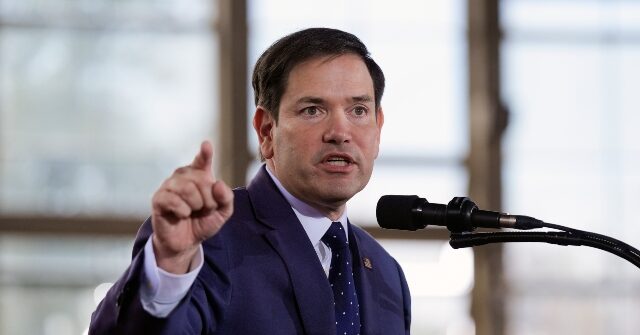The Government’s draft plan makes it clear it won’t be aiming for slashing emissions at the source, if it is cheaper just to plant more pine trees.
Photo: Derek Morrison
New Zealand’s future climate targets are in jeopardy, unless new policies or technology come to the rescue by the end of the decade, according to calculations out today.
The government’s draft emissions reduction plan was published on Wednesday morning, laying out how it will meet greenhouse gas budgets on the way to reaching net-zero carbon emissions by 2050.
The emissions picture is worse than it was a year ago, partly because the government has not announced enough new policies to counter the long-term impact of ditching Labour-era climate policies, and developments it doesn’t control, such as Tiwai Point aluminium smelter staying open.
As things stand, the country is on track to comfortably meet its first emissions budget (2022-2025) and narrowly meet its second budget (2026-2030), though not as comfortably as it was on track for a year ago.
The third budget (2031-2035) looks set to be missed by around 17 million tonnes of emissions, under middle-of-the-road assumptions about the economy and other things.
One tonne of carbon dioxide is equal to nine average car trips from Auckland to Wellington in a petrol car, and the country’s total emissions are currently around 70 million tonnes annually.
The projections have plenty of room for error, particularly looking further out, and were calculated differently than they were when Labour’s plan was assessed a year ago.
However a comparison table using the closest available figures suggests New Zealand was on track to over-perform on its third emissions budget a year ago, under policies in place as at July 2023.
As of July 2024, it is projected to miss that budget by around 17 million tonnes.
The government said policies for meeting that third emissions budget would be the focus of the next Emissions Reduction Plan.
According to today’s documents, the government’s goal of having net zero carbon emissions by 2050 also appears to be at risk.
Projections suggest, without more policy changes, net emissions might still be around 5 million tonnes in 2050, when they should be net zero.
Trees a low-cost alternative, government says
The government’s draft plan makes it clear it won’t be aiming for slashing emissions at the source, if it is cheaper just to plant more pine trees.
An annex to the document shows the government is considering some limits on converting whole farms to pine forestry.
The option mentioned in the draft plan is placing a three-year moratorium on converting the most productive classes (land use classes 1-5) of farmland to forestry, and restricting conversions on land class 6 to 15,000 hectares per year. There would be no limit on converting land class 7 into pine forest, the least productive category for food growing.
Calculations in the document suggest this kind of restriction would not have any measurable impact on emissions, suggesting it may not have a big impact on rates of tree-planting.
Relying on offsets – whether from trees, carbon capture technology or natural features such as wetlands – is a major feature of the government’s draft climate plan.
The plan focusses on meeting targets in the lowest-cost way – meaning placing no major limits on planting pines trees to meet targets and encouraging technological solutions like storing carbon emissions in underground reservoirs, rather than cutting emissions at the source. Other natural solutions such as re-flooding drained peatlands are also being considered.
“This government is committed to a least-cost, net-based approach, which will maximise the emissions reduction value of every dollar we spend. It also acknowledges the role that offsets like forestry and other carbon removals play in bringing us closer to our emissions reduction targets,” says the draft plan, which is now open for public consultation.
Projections in the document show a small gain to households from the government’s proposals versus sticking with the status quo – with household consumption decreasing by 0.39 per cent under the government’s draft plan compared with 0.4 per cent under current policies. Those calculations don’t account for any benefits to households for example from clean energy, warmer houses or lower air pollution.
The Climate Change Commission has previously warned against relying too heavily on trees, because of the risk of carbon offsets driving planting on all the country’s available land – while polluters fail to tackle the root causes of emissions, such as burning fossil fuels in vehicles and factories.
Relying on planting instead of focussing more on cutting emissions could make it hard to keep emissions down after 2050, the commission has warned, and planted land is tied up forever, unless the owner repays any carbon credits gained from growing the trees.
The draft plan acknowledges relying on forestry has risks, but comes down on the side of what it calls the “low cost’ option of using exotic trees (pine trees) rather than focussing more effort on cutting emissions.
“While a forestry-led response could be least cost in the short term and provide some co-benefits (such as erosion control), it also risks losing stored carbon in the trees through wildfire, pests or weather events. The government has had to judge the likelihood and scale of these benefits and risks in forming its least-cost strategy,” it says.
How the government’s policies – and scrappages – have changed the picture
Figures in the draft plan reveal the climate impact of ditching Labour’s policies including EV subsidies (1.4 million tonnes more emissions from 2026-2030 ), grants to replace big industrial boilers (4.3 million tonnes more from 2026-2030 ), and relaxing standards on tailpipe emissions for cars imported into the country (a million tonnes, between now and 2035).
Delaying putting a price on emissions from farming from the original date of 2025 added another 1.9 million tonnes from 2026-2030. Carbon prices falling from what was expected (partly a result of the Government’s approach to allowing forestry to offset emissions) added another 0.7 million tonnes.
Tiwai Point continuing to operate (not a government decision) added 4.8 million tonnes from 2026-2030. Other non-government changes also played a role, including accounting changes to how emissions are counted.
The projections show new policies will make up some of the shortfall, but not all of it.
The government’s seven main proposals are:
- Targeting 10,000 electric vehicle chargers by 2030 (saving a maximum of 0.01 million tonnes of emissions in 2025-2030 and 0.2 million in 2030- 2035.)
- Pricing agricultural emissions by 2030 and making emissions-cutting tools available to farmers (saving 0.1 million tonnes of emissions in 2025-2030 and 5.5 million by 2030-2035). Those higher reductions would depend on a methane-cutting supplement for cows and sheep arriving in the New Zealand market, while the policy of pricing farming emissions will happen five years later than proposed under Labour.
- Investigating carbon capture and storage, for example gas companies catching and storing CO2 in empty oil and gas reservoirs (potentially saving 1.4 million tonnes of emissions in 2025-2030, and 3.2 million in 2030-2035).
- Electrify NZ policy to reduce consenting barriers for renewable energy (saving 0.1 million tonnes of emissions in 2025-2030 and 1.6 million from 2030-2035).
- Better public transport (saving 0.1 million tonnes of emissions from 2025-2030 and 0.3 million from 2030-2035). This including investing in projects such as Auckland busways. Notes with the document say some of this benefit might be undone by the government’s increased spending on roads.
- Invest in resource recovery for processing organic waste through the Waste Minimisation Fund to reduce waste emissions (saving 1.3 million tonnes of emissions from 2025-2030 and 1.3 million from 2030-2035).
- Improve organic waste and landfill gas capture by extending requirements to catch methane gas to more landfills (saving 1.1 tonnes of emissions from 2025-2030 and 1.4 million in 2030-2035).
Other policies include lightening consenting requirements for wood processing facilities, planting native trees on Crown land, creating a legal framework for offshore wind turbines, encouraging companies to extract gas, a fossil fuel (on the basis it will reduce the need for coal), and lessening tailpipe standards on new car imports (a move which will increase emissions). The government also wants to look at counting other forms of natural carbon storage aside from trees, for example restoring peatlands.
In total, new policies could provide reductions of about 4 million tonnes of emissions from 2026-2030 and 13.5 million tonnes during 2031-2035, according to the document.
But that will not be enough to meet the 2031-2035 budget without significant new developments.
A paragraph mentioning reducing emissions from buildings said the issue was still being considered.
The draft plan landed a day after it emerged that Building and Construction Minister Chris Penk wants to roll back energy efficiency improvements to the Building Code that started in mid-2023.
Carbon price could sit at $50 for a long time
The government’s main policy for tackling transport and energy emissions is having a price on pollution under the Emissions Trading Scheme. The document says it doesn’t want to interfere with the carbon market by bringing in other policies that could cover the same emissions.
But without major changes to the ETS, carbon prices could be as low as $50 a tonne in 2050, according to the document, compared to $230 when prices were modelled a year ago.
“There is a risk that from the mid-2030s onwards, the NZ ETS may not encourage enough reductions or removals to achieve and sustain net zero,” it says.
One of the main reasons are that nitrous oxide from farming – a long-lived gas, meaning it has to fall to net-zero – is not in the ETS, so there’s no price incentive in that market to cut it. That means farmers will need other incentives.
Another main reason, according to the draft plan, is the number of large industrial manufacturers who are in the ETS but will still be getting free carbon credits in 2050, unless something changes before then.
The draft plan also lists other potential options for saving emissions, not all of which are far enough advanced to be quantified.
One is the EcoPond effluent treatment system for dairy farms, which could save up to 3.1 million tonnes in 2031-2035 if farmers embrace it. Another is low-methane rams spreading low-methane genetics through flocks (0.5 million tonnes in 2031-2035 if widely available). Finally, encouraging private companies to plant forestry on Crown land, which could save up to 5 million tonnes in 2031-2035. However the amount of land available for this has not been properly estimated yet.
The numbers in detail:
- New Zealand has maximum emissions budgets for every year until 2035. These start at 71 million tonnes this year, falling to 69 in 2025, then to 66 million in 2026 and 63 in 2027. By 2035 the annual budget is 49 million tonnes of planet-heating emissions.
- According to government projections, NZ is on track to be 6 million tonnes under budget from 2022-5, 2 million tonnes under budget from 2026-2030 but 17 million tonnes over budget in 2031 to 2035. That is significantly worse than the projection the same time a year ago. Some of this shift was caused by accounting changes, and different methods, however some of it is the result of policy changes under the Coalition.
- A comparison table in the document shows emissions from 2022-5 will be 11 million tonnes higher under the government’s new proposed policies than estimated a year ago under Labour. From 2026-2030 they will be 19 million tonnes higher than under Labour policies from a year ago, but still with a good chance of being under budget. For 2030-2035 emissions will be higher by 24 million tonnes higher than estimated a year ago under Labour, and 17 million tonnes over budget.





















Discussion about this post